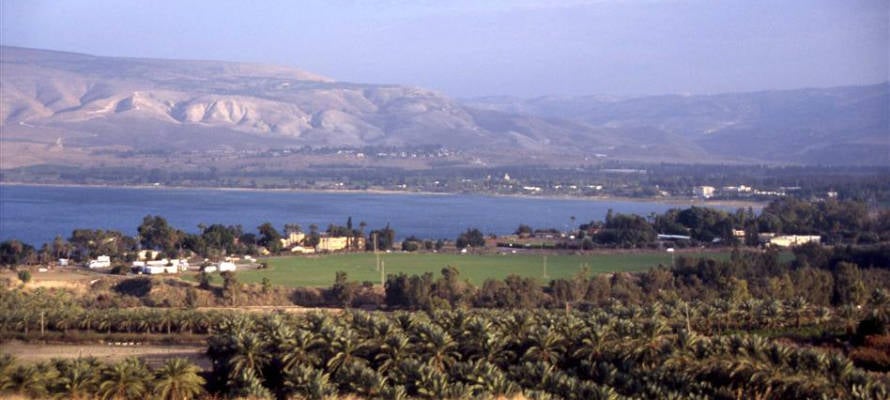
Between 1948 and 1967, there were no civilians living on the Golan Heights, which was under Syrian control. Now, under Israeli administration, there are 15,000 residents, and the area has come to life.
Before 1967, living in the eastern Galilee was very risky. The Golan Heights, which is a large plateau towering over the eastern Galilee, had been part of Syrian territory. The Golan is approximately 40 miles long from north to south and 10-12 miles wide from east to west. In the Bible, the area is called the Bashan and its ancient ruler was a king named Og.
Between 1948 and 1967, while the Golan Heights was under Syrian control, there were virtually no civilians living there. The area was used completely for Syrian military installations. Jewish communities sitting below the Golan suffered for nearly 20 years as the Syrians used their height advantage to fire down on them. They would even shoot at fishermen on the Sea of Galilee. Kibbutz Ein Gev, which is on the eastern shores of the Sea of Galilee, suffered terribly.
What changed in 1967? On July 5 of that year, the Six Day War began. Without going into detail of the build-up to the war, suffice it to say that in the south, the Egyptians closed the Straits of Tiran, a major shipping lane for Israel, which was considered an aggressive act of war. Israel, having no choice but to respond, struck the Egyptians on the morning of July 5 and devastated the Egyptian air force before they even had a chance to take to the air. Essentially, the war with Egypt on the southern front was over within the first couple of hours, and the next two days was mop-up.
Despite being warned by Israel not to enter the war, Jordan did so, forcing the Jewish State to defend itself on that front as well. Jordan had previously signed a pact with Cairo and was trying to aid Egypt by attacking Israel. On days three and four of the war, the battle for the re-unification of Jerusalem took place. Ultimately, Jordan was defeated and Jerusalem was redeemed and became the unified capital of the Jewish people.
But what happened in the north? Syria took full advantage of what was happening in the south and in Jerusalem and began shelling Israel heavily all along the border. The residents of the north were furious at the government of Israel and sent a delegation to the Knesset (Israeli Parliament), requesting that the army come to their defense. The Knesset initially responded that it did not want to open another front, as it already had its hands full. This government decision, however, quickly changed after more debate, and the IDF mobilized to redeem the Golan Heights from the Syrians.
On June 9, Israel began an operation against the Syrian forces on the Golan Heights. In less than two days, by the afternoon of June 10,, Israel had complete control over the area. After 19 years of Israeli efforts to get the international community to reign in the terror launched from the Syrian-controlled Heights, Israel was finally able to ensure peace to the residents of the Galilee. The Syrian army would no longer tower over the Galilee.
Until 1981, the Golan Heights was under Israeli military rule. Finally, in December of that year, Israel voted to annex the territory and include it as part of the official State of Israel, replacing military law with Israeli civilian law. Until recent developments over the past few years, the border shared with Syria on the Golan has been Israel’s quietest.
The Golan is an amazing place to visit. Today there are approximately 15,000 residents, and the area has come to life. There are wineries, beautiful fields, agriculture and a thriving city named Katzrin that is referred to as capital of the North. Israel has built over 20 reservoirs, and there is even skiing on Mt. Hermon, which sits just north of the Golan Heights. There are waterfalls, wonderful nature reserves and several hiking trails, as well as Jewish historical sites. The Golan is a favorite vacation destination for Israelis all year round. Come and visit! You will not be disappointed!
By Rabbi Moshe Rothchild
Licensed Tour Guide

Free Ebook: 10 Best Places to Visit in Israel
The Land of Israel has provided the backdrop for some of the most important events in human history. From the Old City in Jerusalem to the Sea of Galilee, people from all over the globe visit the Holy Land each year to take in the breathtaking scenery and inspiration of Israel. Now you can experience this beauty for yourself from the comforts of home and maybe plan a trip of your own to Israel. Get the free, exclusive eBook from United with Israel: The 10 Best Places to Visit in Israel.
